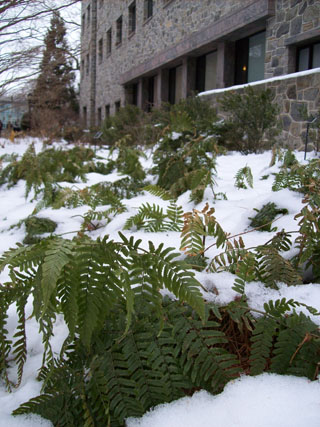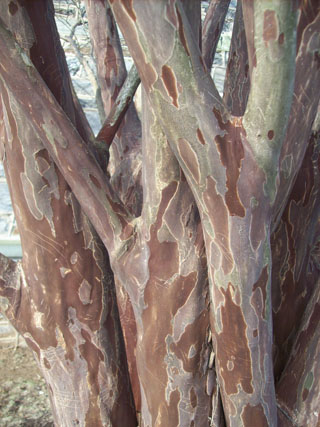Plants of the Week – January 17
 Cupressus arizonica ‘Blue Ice’, near Sharples Dining Hall, is a native of central Arizona and has great tolerance for hot, dry conditions. photo credit: J. Coceano
Cupressus arizonica ‘Blue Ice’, near Sharples Dining Hall, is a native of central Arizona and has great tolerance for hot, dry conditions. photo credit: J. Coceano
 Dryopteris erythrosora, planted along Metasequoia Walk, is an evergreen fern native to eastern Asia. photo credit: J. Coceano
Dryopteris erythrosora, planted along Metasequoia Walk, is an evergreen fern native to eastern Asia. photo credit: J. Coceano
 Picea orientalis ‘Connecticut Turnpike’, planted beside Ben West, was named thus because it was found along the turnpike. photo credit: J. Coceano
Picea orientalis ‘Connecticut Turnpike’, planted beside Ben West, was named thus because it was found along the turnpike. photo credit: J. Coceano
 Lagerstroemia fauriei ‘Townhouse’, flanking the front of Trotter Hall, is a white flowering crape myrtle with beautiful exfoliating bark. photo credit: J. Coceano
Lagerstroemia fauriei ‘Townhouse’, flanking the front of Trotter Hall, is a white flowering crape myrtle with beautiful exfoliating bark. photo credit: J. Coceano





jim
Posted at 15:17h, 18 JanuaryI am in zone 6 and we have problems with Cupressus arizonica and cultivars. I planted two in a garden at our local library. Each had reached, rather quickly I might add, a height of about 20′ when the winter of 2009/10 caused whole branches to die. Cutting out the branches in their considerable number would not have been practical nor aesthetic so the trees were removed. Other Cupressus in the area show the same stress from year to year. Leylands also suffer the same fate once they contract the die-back of branches–often planted as windbreaks or privacy screens–they often have to be taken down leaving holes in the planting scheme.
Andrew Bunting
Posted at 15:42h, 18 JanuaryWe have seen this also happen with some conifers such as the Japanese red-cedar, Cryptomeria japonica. It is often no so much a condition of the winter cold, but how these conifers harden off going into the winter. If we have a warm and/or wet fall then the likelihood of winter damage on some of the more tender conifers increases.
Andrew Bunting, Curator
Scott Arboretum